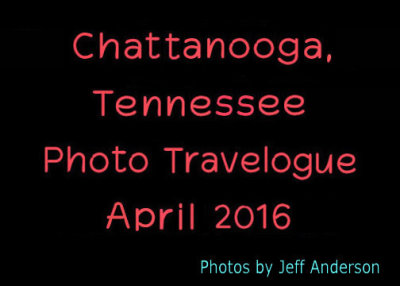
Chattanooga, Tennessee Cover page. |

Going up the Incline Railway to Lookout Mountain. |

It is very steep (and scary) going up in the train! |

Once we got to the top, we walked to Sunset Rock, which has a magnificent view. |

Map of Sunset Rock and vicinity. |

Sign telling some of the Civil War history of Sunset Rock. |

I made a panoramic photo of 4 photos combined to show the view. |

View of the Incline Railway coming up the mountain. |

The Incline Railway was getting closer. |

The train arriving at the summit. |

On the third day of my visit, we went to Chattanooga to Coolidge Park. |

Kids playing on statues at Coolidge Park. It was named after a war hero, not Calvin Coolidge. |
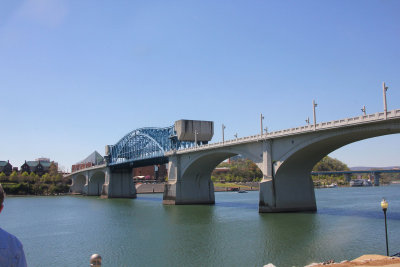
View of the Chattanooga Market Street Bridge, is a drawbridge which crosses the Tennessee River.. |
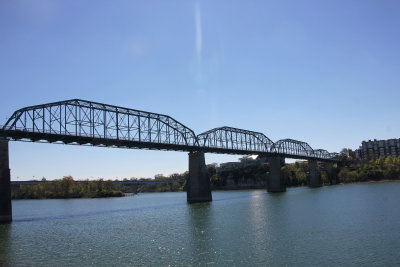
The Walnut Street Bridge was the first to connect Chattanooga, Tennessee's downtown with the North Shore. |

View across the river of Chattanooga's Hunter Museum and Gallery of Art. |

Crossing on foot the Walnut Street Bridge, which is now a pedestrian bridge. |

View from the Walnut Street Bridge of Coolidge Park. |

We had a great view. |

Looking down at Coolidge Park from the bridge. |

More views of Coolidge Park. |

View from the other side of the Tennessee River of a path leading up to the Hunter Museum of Art. |
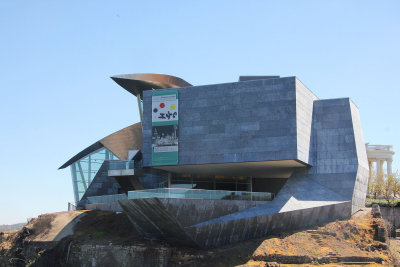
The modern wing was designed by Randall Stout and completed in 2005. |
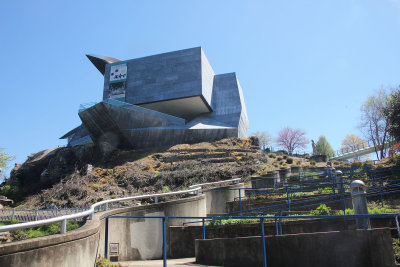
The museum is situated on an 80-foot bluff overlooking the Tennessee River and downtown Chattanooga. |

Prior to the Civil War, the a furnace existed in the bluff below the present-day museum. |

Sign describing the bluff furnace and the coming of the Civil War. |

Iron was manufactured in pre-Civil War Chattanooga. |

Bridge that leads across bluff to the museum. |

Fašade of the modern wing of the museum |
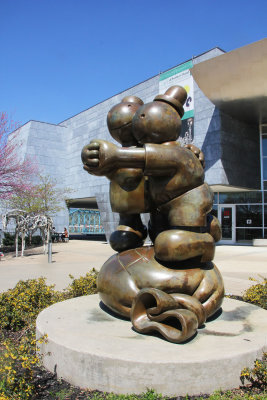
A modern, cartoonish sculpture by Tom Otterness in front of the museum. |

Sign describing the sculpture, which is entitled, "Free Money." |

Side view of the modern section of the art museum. |

From the art museum terrace, one can see the Walnut Street Pedestrian Bridge. |

Another view from the museum with the Tennessee Aquarium in the background. |

The Tennessee Aquarium was built around the same time as Randall Stout modern wing of the Hunter Art Museum. |

The Faxon House is the older section of the museum, built in 1904, where a Confederate battery had been fought. |
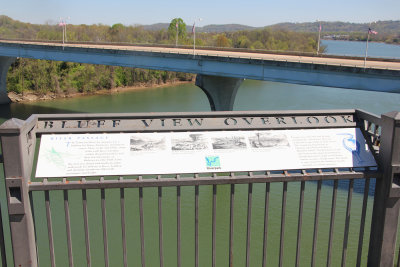
From the Hunter Museum, we walked to the Bluff View Overlook for another view of Chattanooga and the Tennessee River. |

I did a composite photo of a sign describing the history of the River Passage. |

Sign at Bluff View Overlook describing the Tennessee River Park Master Plan. |

Modern stainless steel and granite sculpture at Bluff View Overlook. |

It is called "Continuum" and was sculpted by Sally Rodgers in 2012. |

River view from the Bluff View Overlook. |

As we continued on our walk, we walked back towards the Walnut Street Pedestrian Bridge. |

Sign at the entrance to the Bridge. |

It was erected in 1990 by the Smith Bridge Company. It was the first bridge built crossing the river. |
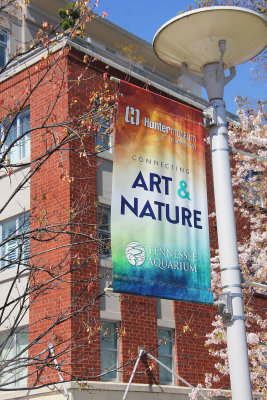
Banner for the Hunter Museum and Tennessee Aquarium, two of Chattanooga's biggest tourist attractions. |

Fašade of the Tennessee Aquarium. |

It looks like fabric on the exterior, but it is actually stone. |

Close-up of the aquarium. It opened in 1992, but had a major expansion at the same time of the art museum, in 2005. |

Another vantage point of the aquarium. |

View of the Tennessee Aquarium that faces the Tennessee River. |

My final stop of the tour was to the Chattanooga Choo-Choo. |

Sign describing Chattanooga's stragegic importance in the Civil War, because it was a railroad hub. |

View of the present-day Chattanooga Choo-Choo. |

Close-up of the steam locomotive. |
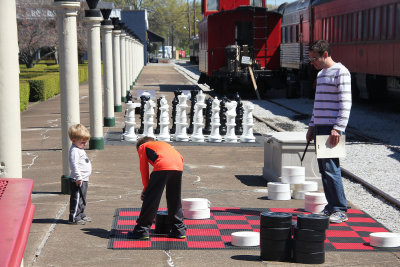
Oversized checker and chess boards at the train station. |

The Gardens Restaurant at the Chattanooga Choo-Choo station looked elegant. |

View of one of the long trains at the station. |

As one can see from this sign, there are many hotels and conferences at the Chattanooga Choo-Choo location. |











